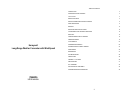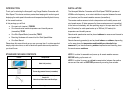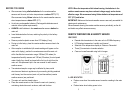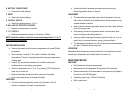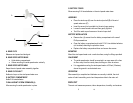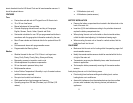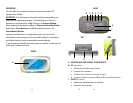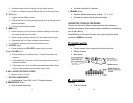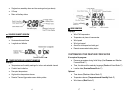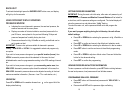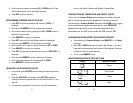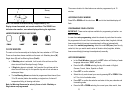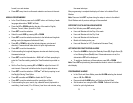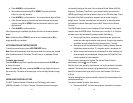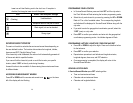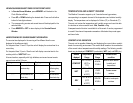11
11
atomic time data from the US Atomic Clock and all remote weather sensors. It
should be placed indoors.
FEATURES
Time
• Precise time and date set via RF signals from US Atomic clock
• 12 or 24 hour time format
• Manual adjustment of time and date
• Calendar displaying date with month and day in 6 languages
English, German, French, Italian, Spanish and Dutch
• Sunrise/set calculation for over 100 pre-programmed world cities in
accordance with the geographical information entered by the user
• Moon Phase calendar and historical data for the past and future 39
days
• Dual crescendo alarms with programmable snooze
• Programmable Ice Warning Alarm
Weather
• Weather forecast for the next 12 to 24 hour in six large icons:
Sunny, Partly Cloudy, Cloudy, Rainy, Stormy and Snowy
• Barometric pressure in imperial or metric units
• Altitude adjustment for pressure compensation
• 24 hour barometric pressure history chart
• Multiple weather alarms
• Indoor/Outdoor Temperature & Humidity in up to 5 remote locations
(additional sensors required)
• Dew point and comfort level indicators
• Wind speed and wind gust averages and memory
• Operating range from 100 feet (30 meters) up to 328 feet (100
meters)
12
Power
• 2 AA batteries (main unit)
• 4 AA batteries (remote sensors)
BATTERY INSTALLATION
• Remove the battery compartment door located in the table stand on the
back of the main unit.
• Insert two (2) AA size batteries according to the polarities shown and
replace the battery compartment door.
• When placing the main unit on the table or other horizontal surface,
unfold the table stand adjusting it to the desired viewing angle.
• When mounting the main unit on the wall or vertical surface, fold the
table stand back into the unit.
PLACEMENT
• Make sure that the main unit is locating within the operating range of all
remote weather sensors.
• Ideally the remote weather sensors should be mounted within the line
of sight of the main unit.
• Transmission range may be affected by trees, metal structures and
electronic appliances.
• Test reception before permanently mounting all the remote weather
sensors.
Avoid placing the main unit in the following areas:
• Direct sunlight and surfaces emitting and radiating heat, such as
heating ducts or air conditioners.
• Areas with interference from the wireless devices (such as cordless
phones, radio headsets, baby listening devices) and electronic
appliances.



